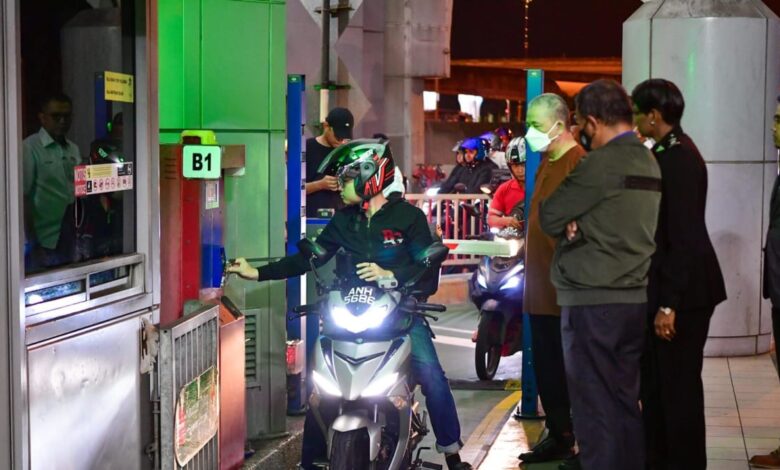Malaysia’s passport QR code trial at Johor-Singapore Causeway faces 2-week delay; app ‘still being developed’

SINGAPORE: Proof of concept (POC) testing for QR code clearance for Malaysians crossing the Johor-Singapore Causeway anticipated to start last Saturday (Jun 1), has been delayed for two weeks, according to a Malaysian state official.
State Works, Transportation, Infrastructure, and Communication Committee Chairman Mohamad Fazli Mohamad Salleh said the vendor was currently completing the mobile application to enable QR code usage at Bangunan Sultan Iskandar (BSI) customs, immigration and quarantine complex.
“The MyRentas mobile app is still being developed and is expected to be fully ready within the next two weeks,” he said to reporters in Jalan Abdul Samad on Sunday, as quoted in The Star.
Mr Fazli added that the testing for QR code immigration clearance at the Sultan Abu Bakar Complex (KSAB) was up and functioning.
“KSAB has begun as scheduled on Saturday and so far, it is running smoothly,” Mr Fazli said, pointing out that during the POC period, KSAB and BSI would be trialling different mobile apps.
“Those travelling through KSAB can use the QR code system through MyTRIP, which is embedded in the MySejahtera mobile app. At the BSI, the mobile app travellers could use to test out the system is called MyRentas,” he explained.
Earlier, Deputy Prime Minister Fadillah Yusof had said the MyTRIP system would undergo a three-month POC trial before potentially being rolled out at checkpoints nationwide.
The MyRentas BSI system is similarly expected to trial run for three months.
The trial period for Malaysia’s QR immigration initiative, allowing passengers to show a unique QR code instead of their passports, was announced earlier this year to facilitate travel for those crossing the Singapore-Johor border.
In April, a Johor immigration department spokesperson told CNA that certain travellers would be able to use QR code clearance at both BSI and KSAB, the immigration complexes linked to the Johor-Singapore Causeway and Tuas Second Link respectively.
The official said that motorcyclists at KSAB will be able to scan their QR codes while bus passengers could do so at both checkpoints.
He added there were plans to include Malaysian motorcyclists passing through BSI in the pilot initiative.
This was expanded from an earlier announcement by authorities that only Malaysians travelling on factory buses would be involved.
The initiative was slated to be rolled out in phases from its June start date and was expected to reduce immigration clearance time by half for the 400,000 travellers that pass through the checkpoints daily, according to local media. It was planned to function similarly to a Singapore QR clearance system which was put into place on Mar 19.
The recent Johor scheme was met with enthusiasm, with almost 70,000 people registering to use the trial system at the border crossings.
According to local media, checks at the KSAB complex on Saturday found that the majority of bus passengers were opting to try out the new QR codes, despite still having access to other options, such as E-gates for biometric passports and manual lanes.
Acting Director of Johor Immigration Mohd Faizal Shamsudin, quoted in local media on Sunday, said that passengers had also given positive feedback on using the QR code.
He added that the number of counters would be increased in subsequent phases and that the MBike for motorcyclists, E-gate and manual counters would remain open to frequent travellers.
He urged travellers to log into their social media channels for traffic updates and live-streaming of traffic flow at both immigration points.
Mr Fazli stressed that the government hoped that travellers would continue to use the available QR code systems and give feedback on their experience.
“We need the feedback so that, at the end of the POC period, we can determine which applications are better,” he said.





